|
|
ADDRESS AND INTERACTION WITH THE PARTICIPANTS OF THE NATIONAL FINALS OF 'THE OUTLOOK SPEAK OUT - INTER SCHOOL DEBATE', VIGYAN BHAVAN, NEW DELHI
06-10-2006 : Vigyan Bhavan, New Delhi
Ignited Mind of the Youth - The most Powerful Resource
"Small aim is a crime"
I am indeed delighted to interact with the participants of National Finals of ?The Outlook Speak Out - Inter School Debate?. I extend my congratulations to all the participants in this competition which provides an opportunity for independent thinking and expressing your viewpoints on national and international issues. My greetings to the members of the Outlook Group, creative writers, journalists, media personnel, students and other distinguished guests. I am happy to note that this competition allows the blossoming of the creative genius and the debating ability of the children in a healthy competitive environment. I understand that in the preliminary rounds of the debate, the students had been given the topics such as ?India is a soft state? and ?Globalization is a bane for Indian farmers?. For the finals you are debating on the topic ?Youth Plays an Active Role in National Development?, which is dear to most of us. While there can be debates and differences of views on the first two topics, there can be no doubt on the affirmativeness on the Youth?s role in National development. Often the youth and the national development become synonymous. Since today?s event will act as a stepping stone for our students to excel in the international arena, I wish the students the very best to bring glory to India. I would like to talk about few aspects that may help you to sharpen your performance in the international fora.
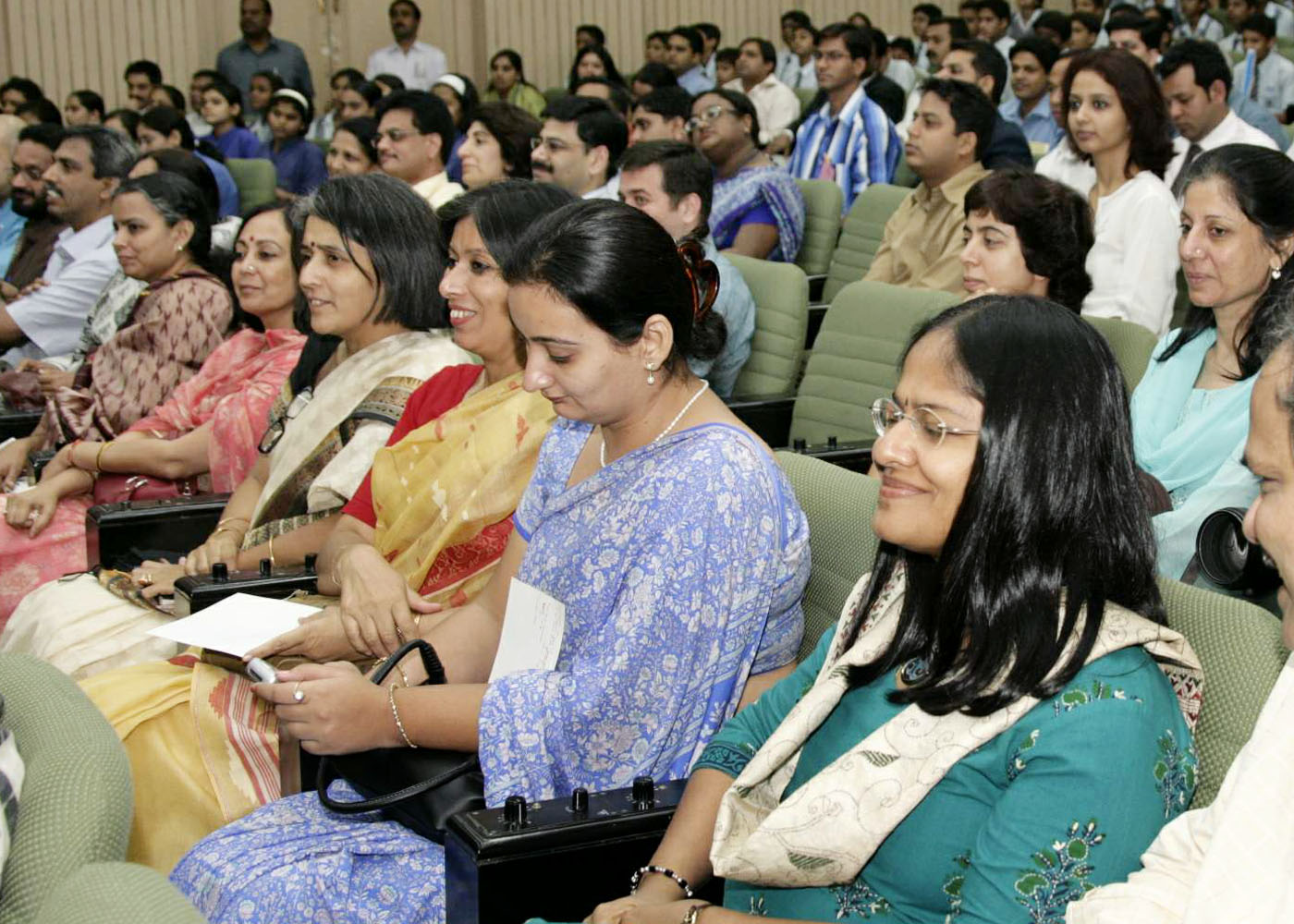

Traits of Debate
The first quality that a good debater cultivates is the ability to articulate his or her thoughts in a logical manner. This can be only achieved, by systematic and comprehensive collection of cohesive set of thoughts, on the topic of the debate through continuous acquisition of knowledge, hard work and sincerity. As soon as you decide to debate on a given topic, you must embark upon collecting all the material in favour of or against the topic. After you have assimilated all the views expressed, you must calmly and firmly assemble your thoughts in a most logical fashion. Now, you are armed with the wherewithal to convince anyone and even convert a strong antagonist of your views into a supporter. You must also understand the audience, their background and possible viewpoints and mindsets that they may have. The challenge for you then would be to transform your thoughts and your ideas into words that would directly tickle the minds of the audience, please their eyes and ears and touch their heart.
The debating ability that you develop as a student will stay with you throughout your life. If you choose to become a lawyer, your entire profession is one of debate. Same could be said of the political leader. Even scientists, doctors, housewives, husbands, fathers and mothers use their debating skills either directly or indirectly to prove their points and influence others. Thus, a healthy debate can bring about harmony and cohesion in the professional and social systems. This in effect becomes a beginning of one big happy family. The whole life is nothing but one long constructive debate.
To sharpen your debating skills, I thought of sharing with you few ideas that may add to your knowledge base which is an important pre-requisite for a good debate. A good debater will always be a good citizen. The debater establishes a two way communication between oneself and the rest. This two way communication often receives criticisms and suggestions and this feedback when used to correct the hypothesis, can lead to the evolution an action plan for any situation ? be it as simple as ?Life is to live and not to prepare for life?, to complex topics such as ?Global peace is a reality or a myth?. We will always remember that when the world leaders try to solve the world problems during war and peace times, they would have started their life one day as debaters like you in their schools.
To enhance your debating capability internationally, I would like to share with you some thoughts on two topics. One is the importance of competitiveness of a nation. The other is how to achieve a peaceful, prosperous and safe society globally? I believe, both topics are internationally important, and you can package it depending on the context in many of your debates. The title of my talk ?Ignited Mind of the Youth: Is the most Powerful Resource?.
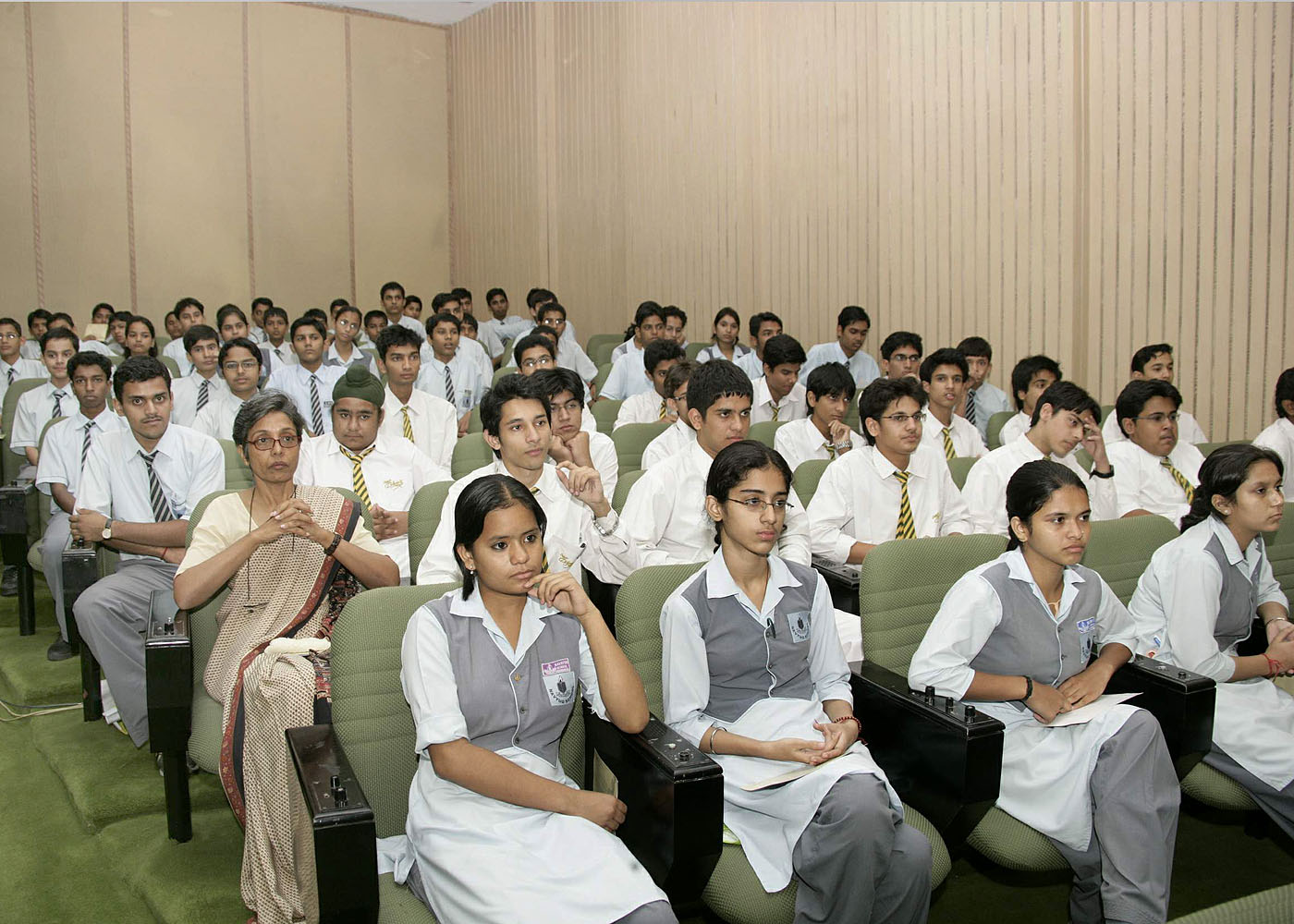

Law of development
I was studying the development patterns and the dynamics of connectivity between nations, especially in trade and business. As you all know the world has few developed countries and many developing countries. What is the dynamics between them and what connects them? Developed country has to market their products in a competitive way to different countries to remain as developed country. The developing country to get transformed into developed country; they too have to market their products to other countries in a competitive way. Competitiveness is the common driving factors between the two types of nations. Competitiveness itself has three dimensions: quality of the product, cost effectiveness and just-in-time product availability in the market. Indeed this dynamics of competitiveness in marketing of products by developing and developed countries is the law of development. There is a relationship between the core competence and the competitiveness of the country particularly the human power. Such a law applies to all students who are participating in this competition. A nation to be competitive, it needs the ignited minds of the youth, apart from advancement in sectors like agriculture, pharmacy, knowledge products, manufacturing, small scale industries, scientific and technological progress. India is fortunate today to have 540 million youth, while most developed countries have an aging population. If all the youth of our country are ignited, the bright future of India will definitely be a reality.
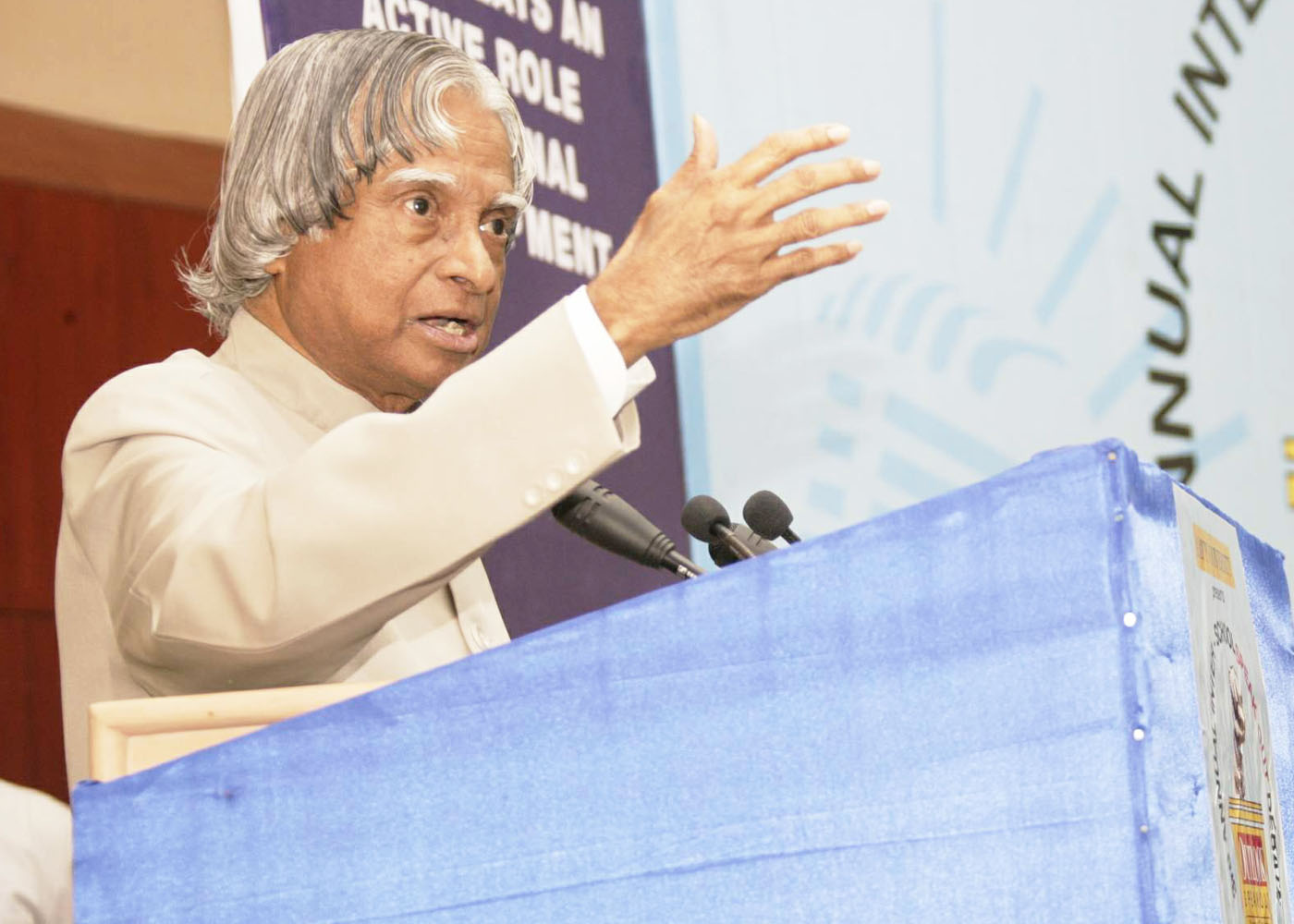
How to achieve the peaceful, prosperous and safe society globally?
The second area, which I am going to discuss, is on how to achieve the peaceful, prosperous and safe society globally?
Challenges of Modern Society: Advances in genetics demonstrating great similarity in the genome of man and animals shows that the limbic brain perhaps is the cause for all conflicts within and outside.
So far human society, from origin until now has always been at war within and between groups and has led to two World Wars. Presently, terrorism and low intensity warfare are affecting many parts of the world.
Today, with a global population of 6 billion, only 3 billion have access to limited or perhaps satisfactory supply of drinking water. It is estimated that 33 percent of the world's population has no access to sanitation and 17 percent has no access to safe water. But by 2025 the world population is going to rise to 8 billion but only one billion will have sufficient water. Two billion, which is 25 percent, will have no access to safe water. Five billion that is 62 percent will have no access to sanitation. We should collectively find a solution for this problem.
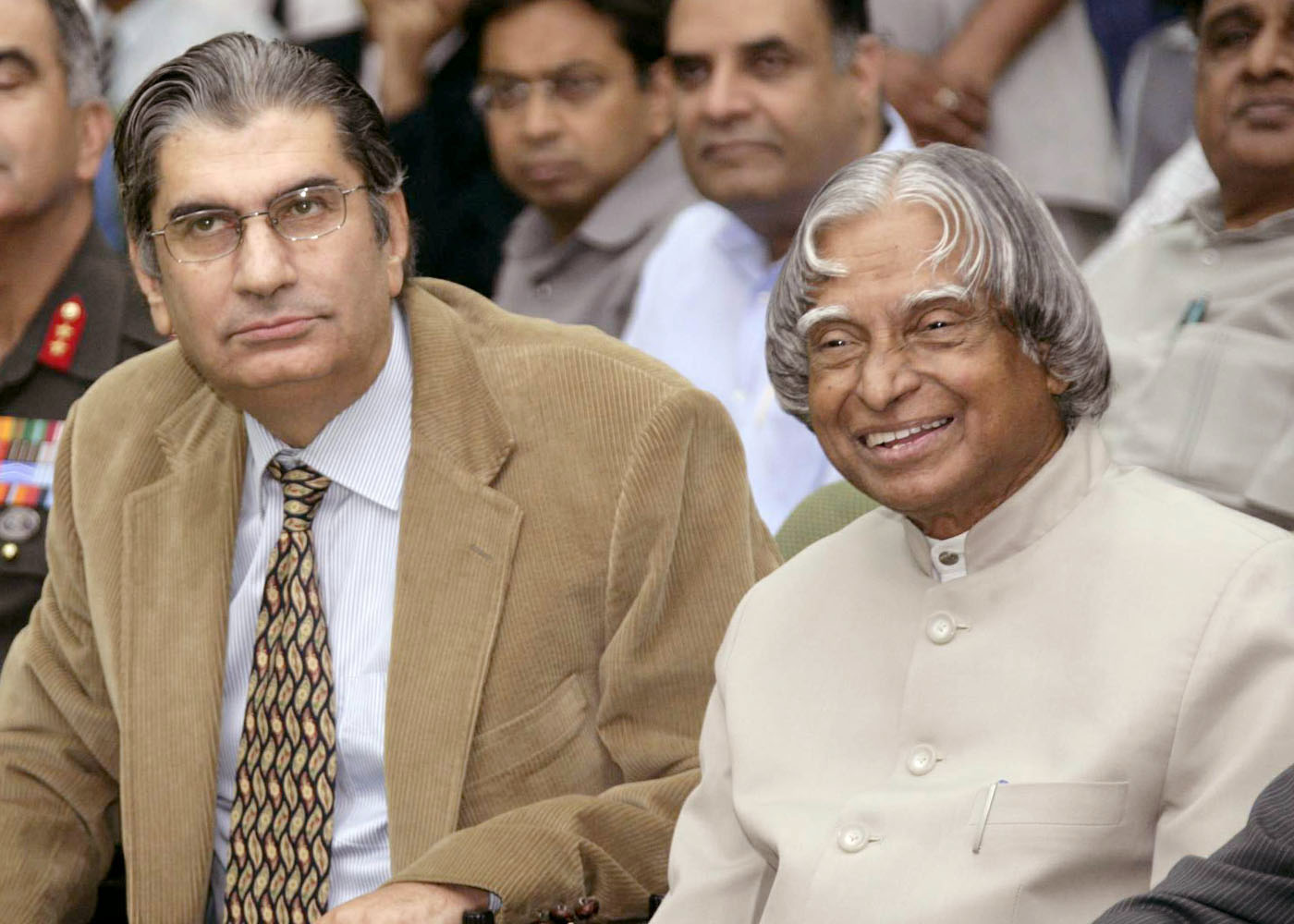
The use of fossil fuels has caused enormous problems for the environment resulting in abnormal changes in climatic conditions. This has resulted in researchers to look for clean energy sources such as hydel power plants, nuclear power plants, energy from renewable sources such as solar, wind and tidal. Also, in the transportation sector there is a need to progressively introduce the use of bio-diesel and ethanol.
In the health care sector, major diseases like HIV/AIDS, cancer, tuberculosis, malaria, other water borne diseases and coronary artery diseases have increased considerably. Man is fighting a war on all fronts ? terrorism on one side, diseases and environmental degradation on the other.
Solutions to Challenges: What I would like to discuss with you is the possibility of creating a near disease free, economically prosperous and peaceful society. In my opinion, this could be achieved through a triangular approach namely (a) creation of clean green environment, (b) promotion of 3-D, that is a three dimensional life style approach to healthcare coupled with genetically engineered drugs and (c) evolution of enlightened citizens. I would like to share India?s experience which may be of certain relevance to South Africa and many other nations. The first area of our discussion will be the creation of a clean and green environment.

I. Creation of a Clean and Green Environment
In the field of energy, many innovations are taking shape. The world energy forum has predicted that fossil based oil, coal and gas reserves will last for less than ten decades. Energy is an important parameter for development. Continuously increasing cost of oil sourced from fossil material has prompted many groups to seriously consider the possible energy options. India?s target is to achieve Energy Security by 2020 leading to Energy Independence by 2030 and beyond.
Structure of Energy Sources: Based on progress visualized for India during the next two decades, power generating capacity has to increase to 400,000 MW by 2030 from the existing 130,000 MW. This has been arrived at taking into account the use of efficient transmission and distribution systems and minimization of other losses. Energy independence has to be achieved through three different sources namely hydel capacity, nuclear power and non-conventional energy sources primarily through solar energy, apart from thermal power. The hydel capacity generated through normal water sources and inter-linking of rivers is expected to contribute an additional 50,000 MW. Large-scale solar energy farms of hundreds of megawatts capacity in certain number could contribute around 55,000 MW. Nuclear power plants will have a target of 50,000 MW of power. The balance 115,000 MW has to be generated through conventional thermal plants through clean coal technologies gas and other renewable sources of energy such as wind power, biomass, power through municipal waste and solar thermal power. The most significant aspect, however would be that power generated through renewable energy technologies has to be increased to 25 percent against the present 5 percent. In the transportation sector, India plans to use a large proportion of bio-diesel and ethanol.
This will lead to a clean environment, a hygienic environment for the reasons that we will be partially eliminating fossil material usage that generates the maximum carbon. Now the results are coming in, we can live without fossil material based fuel through solar power generation, nuclear power generation, and hydro power generation. Billions of tonnes of carbon let into the Earth's atmosphere can be nearly eliminated. Similarly by networking the rivers of every nation and the large-scale use of the desalination process in coastal areas, adequate quantity of potable water, water for sanitation and irrigation can be effectively provided. Increased aforestation may also lead to conditions favourable for monsoon rains. The clean green environment will make our planet friendlier for the humanity to grow. Now, I would like to discuss improved healthcare systems for the people.
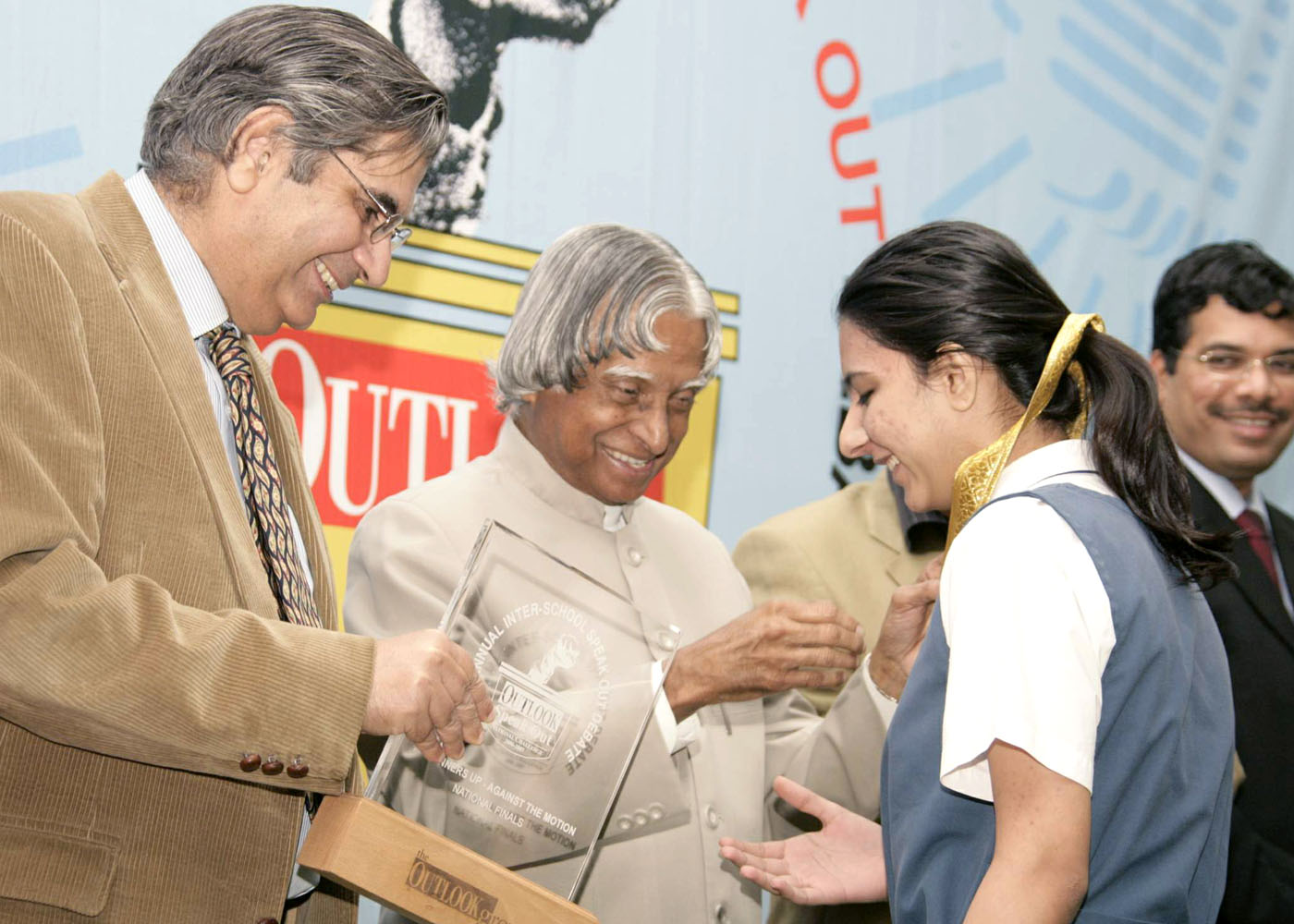

II. Promotion of 3-D Life Style Approach for Healthcare
The discovery of genes and the nature of chromosomes through the human genome project, as you all know, has led to the conclusion that each human being, has nearly about 30,000 genes. The most challenging programme is the proteomics programme, which calls for characterization of proteins from every gene. This will lead to Research and Development and production of genetically engineered drugs and can open a new field of pharmaco genomics and customized medicine. These advanced drugs and other medical interventions can definitely improve the quality of medicare available to patients considerably. However, experimental evidence shows the importance of a favourable lifestyle for realizing long term disease free life.
I would like to present the experience of one such life style intervention. I happened to visit a number of hospitals to see the healthcare delivery systems. During my visit to hospitals, I found that doctors tend to focus their attention on treatment of body ailments to reverse pathology to physiology. It was realized that the success rate of such treatment is only partial. A group of Indian scientists had an opportunity to experiment the concept of mind-body complex approach for therapy on breast cancer patients, when the psycho-neuro, immunological axis was demonstrated to significantly influence the prognosis of these patients. Another experimental evidence of this concept emerged from a study, we had initiated at the Defence Research and Development Organization (DRDO) in collaboration with Global Hospital Research Centre at Mount Abu in Western India, on the regression of Coronary Artery Disease (CAD) through a 3 dimensional life style intervention. It included (a) low fat high fiber diet (b) regular aerobic exercise of walking and (c) meditation. The study clearly demonstrated that lifestyle intervention resulted in regression of Coronary Artery Disease (CAD) as evidenced by the disappearance of plaque in angiograms. Every individual has an inherent ability of spiritual potential which lies dormant. If we invoke this potential, we can definitely enhance the process of healing and improve the quality of life of patients.
Such a three dimensional approach to health care will be a significant evolution of health care philosophy and can be applicable for the treatment of diseases including HIV/AIDS, cancer, diabetes and many other chronic diseases. This life style approach is not only less costly but also provides a sustainable solution for improving the quality of life of individuals. The third area which I would like to discuss is the evolution of enlightened citizenship.
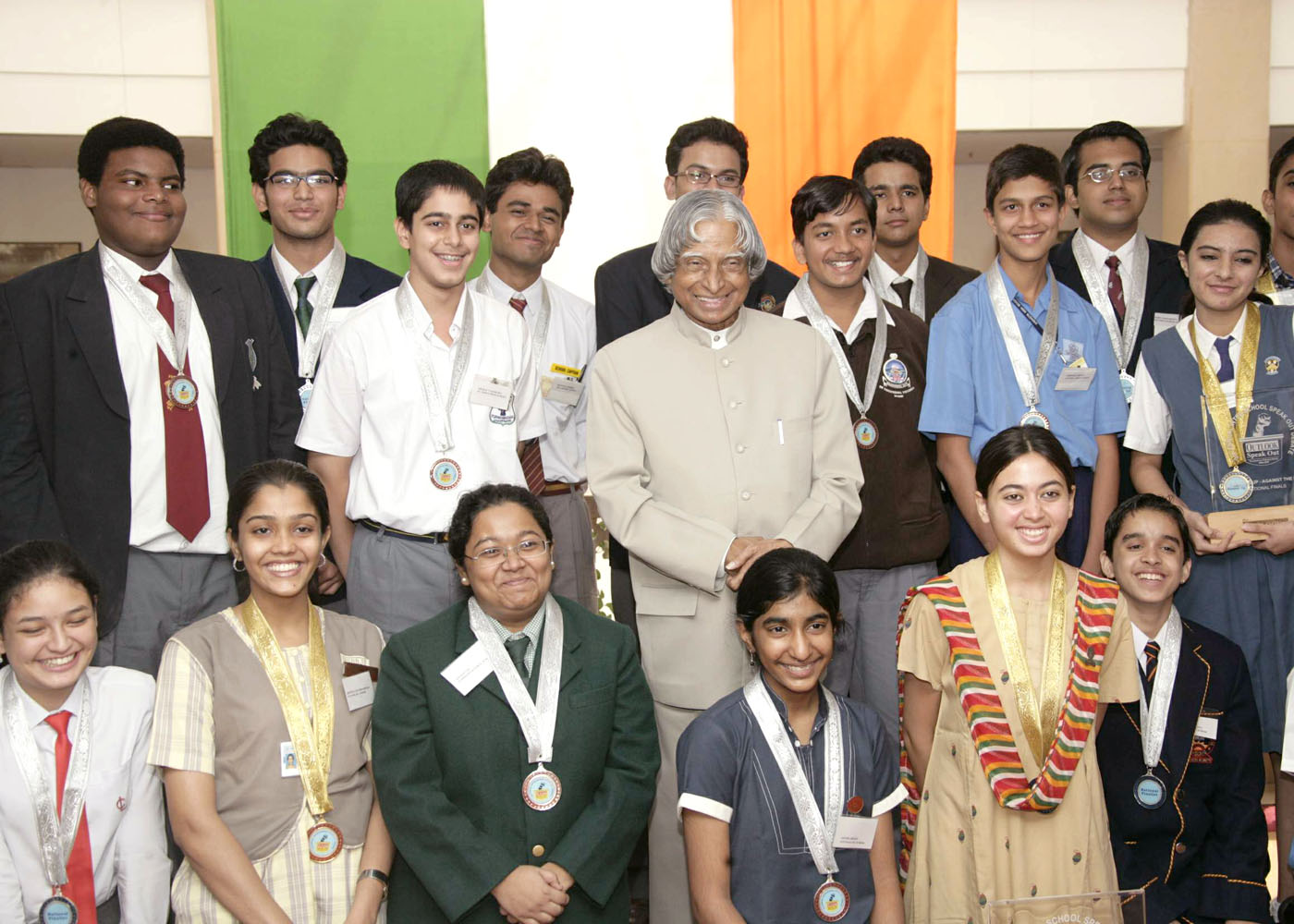

III. Evolution of Enlightened Citizenship
I would like to put forth to this gathering, an action oriented solution for evolving a happy, prosperous and peaceful society on our planet, which I call as ?Enlightened Society?. How do we create such an enlightened society, which has three components (a) Education with a value system (b) Religion transforming into spirituality and (c) Economic development for societal transformation. Let us discuss this issue.
(a) Education with a value system: The best part for a person is his or her childhood and the learning period in school. The prime learning environment is five to seventeen years of age. Of course, at home, love and affection are imparted. But again most of the time is spent in preparing school homework and study, eat, play and sleep. Hence school hours for children are the best time for learning and they need the best of environment and mission oriented learning with a value system. During this stage, they need value based education in school and at home for them to become good citizens. This reminds me of the words of a great teacher's saying, "give me a child for seven years. Afterwards, let the God or devil take the child. They cannot change the child." This indicates the power of great teachers. For parents and teachers, the school campus and home have to have an integrated mission that is education with a value system. They must inculcate moral leadership amongst children, which involves two aspects. First it requires the ability to have compelling and powerful dreams or visions of human betterment, a state of things in which human beings could be better off in the future than they are now. Secondly, moral leadership requires a disposition to do the right thing and influence others also to do the right thing. If the child misses this value based education in school, no government or society can establish a transparent society or a society with integrity. During this period, it is essential to elevate young minds through moral science classes at least for one hour each week, delivered by great teachers. That will elevate young minds to love their country, to love other human beings and elevate the young to higher planes. Throughout the world, in every school, till the age of 17, it is essential that moral science is taught. Such enlightened individuals will definitely promote peace and harmony on the planet. Now, I would like to share an experience that I have had regarding religion transforming itself into a dynamic spiritual force.
(b) Religion Transforming into Spirituality: Universal Mind
I would like to recall an incident that happened four decades ago. Prof. Vikram Sarabhai is the visionary of the space programme in India. He is well known for his cosmic ray research area that led to evolving the space research programme for the nation. Prof. Sarabhai was looking for a site to establish a space research station in the equatorial region of India. He visited a number of places. Thumba in Kerala in Southern India was selected by the scientific community for space research, as it is near the equatorial region and is ideally suited for ionospheric research in the upper atmosphere apart from the study of the atmospheric structure. When Prof. Sarabhai visited Thumba, the locality had a series of villages and thousands of fishermen folk were living in that area. It also had a beautiful ancient church, the St. Mary Magdalene Church, Pallithura and a Bishop's House. Prof. Sarabhai met many politicians and bureaucrats to get the place for the work of space science research. It did not move further because of the nature of the place. He was asked to see the Bishop of Trivandrum, at that time in 1962, Rev. Father Dr. Peter Bernard Pereira. It was a Saturday when Prof. Sarabhai met the Bishop. The Bishop smiled and asked him to meet him the next day, that is Sunday. In the morning after Church Service, the Bishop told the congregation, "my children, I have a famous scientist with me who wants our church and the place I live, for the work of space science research. Dear children, science seeks truth by reasoning. In one way, science and spiritualism seek the same divine blessings for doing good to the people. My children, can we give God's abode for a scientific mission?" There was a chorus of 'Amen' from the congregation and the whole church reverberated. Subsequently, the big event took place in 1962. Rev. Dr. Peter Bernard Pereira, the Bishop of Trivandrum, took the noble decision to dedicate the church in recognition of India's national goal of establishing the Indian Space Research Organisation (ISRO) at Pallithura, Thumba. That was the church where we had our design centre, started rocket assembly, design of filament winding machine for FRP product and the Bishop's house was our scientists' place. Later, the Thumba Equatorial Rocket Launching Station (TERLS) led to the establishment of the Vikram Sarabhai Space Centre (VSSC) and multiple space centres throughout the country.
When I think of this event, I can see how enlightened spiritual and scientific leaders, all converge towards giving reverence to human life. A new church and new schools were established in record time. Of course the birth of TERLS and then VSSC gave India the capability to design, develope and produce world class huge rocket systems and subsequently, India developed the capability of launching geo-synchronous, sun-synchronous and meteorology spacecraft, communication satellites and remote sensing satellites, thereby providing fast communication, weather forecasting and also locating water resources for the country. Today, among us, Prof. Vikram Sarabhai is no longer there, Rev. Dr. Peter Bernard Pereira is also no longer there, but those who are responsible for the creation and making of the flower blossom will themselves be a different kind of flower as described in the Bhagwat Gita: "See the flower, how generously it distributes perfume and honey. It gives to all, gives freely of its love. When its work is done, it falls away quietly. Try to be like the flower, unassuming despite all its qualities". What a beautiful message for all generations, on integration of minds and a universal mind. No where in the world has a church been given for scientific research, it has happened only in India. It is a great message to be spread. The message is, the best component of religion can be transformed into a spiritual force that will shape society. Let me now discuss with you the third component of an enlightened society for transforming a developing nation into a developed nation through achieving economic prosperity, so that large societal imbalances can be removed. In this connection, let me give you an example from India, which has one sixth of the world's population.
(c) Transforming our Nations into Economically Developed Nations
We have in India a population of over one billion people of which 220 million are still living below the poverty line. They need education, they need habitat, they need health care, and creation of employment potential. To meet their needs, we have a second vision of transforming India into a developed nation by 2020. We have identified five areas where India has core competence for integrated action: (1) Agriculture and food processing (2) Education and Healthcare (3) Information and Communication Technology (4) Infrastructure development such as power, transportation, communication, including Providing Urban Amenities in Rural Areas (PURA) and (5) Self reliance in critical technologies. These five areas are closely inter-related and if implemented in a coordinated way, will lead to food, and economic security, and national security. A strong partnership among the R&D, academy, industry and the community as a whole with Government departments will be essential to accomplish the vision for a developed India. The Indian GDP is growing at an average rate of 8 percent per annum whereas the economists suggest that to uplift the 220 million people who are living below poverty line, we have to grow at the rate of 10 percent per annum consistently for over a decade. One of the components through which the rural-urban divide will be bridged and prosperity will be brought to seven hundred million people living in six hundred thousand villages is Providing Urban Amenities in Rural Areas (PURA) in seven thousand clusters. Through a national vision, using the core-competence of individual nations and partnership of friendly countries, it will definitely be possible, to transform a developing country into a developed country as planned.

Conclusion
On this occasion while Outlook Group is in the process selecting the finalists who will participate in the World Individual Debating and Public Speaking Championship 2007 and World Schools Debating Championship, I thought of conveying an inspiring message. I would like to recall a great clarion call of indomitable spirit, which was given by Sir C V Raman, the noble laureate at the age of 82. The message is still reverberating in my mind. Sir CV Raman says : "I would like to tell the young men and women before me not to lose hope and courage. Success can only come to you by courageous devotion to the task lying in front of you. I can assert without fear of contradiction that the quality of the Indian mind is equal to the quality of any Teutonic, Nordic or Anglo-Saxon mind. What we lack is perhaps courage, what we lack is perhaps driving force, which takes one anywhere. We have, I think, developed an inferiority complex. I think what is needed in India today is the destruction of that defeatist spirit. We need a spirit of victory, a spirit that will carry us to our rightful place under the sun, a spirit, which will recognize that we, as inheritors of a proud civilization, are entitled to a rightful place on this planet. If that indomitable spirit were to arise, nothing can hold us from achieving our rightful destiny." Friends, you can see that the indomitable spirit is the sign post of the youth.
The development of a nation is a regenerative process with positive feedback. The beginning of fully developed nation is its youth who form the knowledge base of the country and apply science and technology to develop products and processes that improve the quality of life of all the people. Once this process is set in motion, the nation?s wealth and prosperity improves which in turn improves the environment that creates the larger number of ignited youth, who in turn work for developing the nation. The first sign of the youth power with the knowledge base is our students becoming internationally competitive and winning. In this regard, you have taken your first step. You will bring home the success and announce to the world that the developed India has arrived.
Let me congratulate the members of the Outlook Group for their initiative in providing an opportunity to the young minds to inculcate the inquisitiveness and enhancing their thinking capacity. I congratulate all the participants and wish them many more successes in all their endeavours.
May God bless you.

Question and Answer Session
1. How do you rate the Indian youth on global podium on a scale of 1 to 10?
- Subid Chakraborty, Don Bosco School, Kolkatta.
Ans: I will say it is about 7. To reach 10, lots of work such as acquisition of knowledge, innovative thinking, debating potential, persistent hard work and above all a great aim to succeed are required. In some of the individual disciplines, many Indians are second to none. But the rating is for the collective Indian youth. The Global Competitiveness Report 2006-07 states that India has moved up from 45 in 2005 to 43 this year. I am sure very soon Indian youth will make India achieve the number one position in global competitiveness. I will revise my rating to 10, when the youth make India a corruption free country, free of hatred and violence.
2. How does the President see the Kashmir movement? A freedom struggle or a terrorist movement?
- Sourav Roy, Birla Boys High School Sr. Section, Kolkatta
Ans:I recently met the people of Kashmir and their youth. All of them are keen to live in a peaceful, prosperous and safe state. They are constantly affected by cross border terrorism. This situation has to change. Whenever innocent people get killed, it cannot be called anything other than terrorism.
3. How can we intensify our efforts to eradicate illiteracy? Inspired by your ?Vision India 2020?, we the children of Padma Seshadri School, Chennai have started a project called ?Each one, Teach one?. In our holidays, we teach the children from our neighbourhood. Can the Government or large organizations such as Tata Institutionalize this drive for literacy?
- Shwetha chandrashekar, Padma Seshadri Bala Bhavan Sr. Secondary School, Chennai.
Ans: There are number of initiatives in the country for promoting literacy both in the private sector and the public sector. In a large country like ours, it is essential for every organization which is in a position to contribute towards removal of illiteracy to work in this direction. In that respect, I appreciate the action taken by the students of Padma Seshadri School, Chennai in ?Each One - Teach One? programme. Actually, I have been suggesting each student should educate at least five people who cannot read and write. Recently, when I met a group of tribal students from Andhra Pradesh, they informed me that they have implemented this scheme in full in the tribal area. The model right to education bill is under circulation that calls for free and compulsory education for all children between the age 5 and 14. When this becomes operational in all the states, the literacy level and the general knowledge base of the country would shoot up. The programmes like ?Each one, teach one? are very important and are like the pearls, when a large number of students take up such initiatives, they will become the garland for mother India.
4. The current environment for higher education, particularly in the sciences, is too competitive and stressful because we do not seem to have enough colleges in relation to demand. This takes out partly the joy of education -- can we have your views on how to tackle this problem?
- Janani Rajashekhar, Shrimati Ram Devi Shobraj Bajaj Arya Vidya Mandir, Mumbai.
Ans: For a country like India, the number of colleges we have today are grossly inadequate. However, the government is taking steps to increase the enrollment at the tertiary level by increasing the number of seats in the existing colleges and creating newer ones. The private industries are also pitching in their might to ensure that during the 11th plan period, the tension that you talk about will be reduced significantly. The challenge now in front of us would be to create the necessary physical and intellectual infrastructure to ensure high quality when the quantity goes up. For promoting excellence in any area competition is necessary. If the subject becomes interesting then there is no stress. The students must cultivate interest in science subjects so that they can face the competition with ease and without stress.
5. Mr. President, we have the second largest population in the world, which is a great human resource. However, we also have over 40 million registered unemployed in this country. This is a dangerous situation as such a large number of unemployed people can cause unrest. What is the solution to this problem?
- Akshay vasishtha, St. Jones school, Chandigarh
Ans: This is one of the important issues that we should tackle on priority before we become a prosperous nation. It is so important that it became the full topic of my address to the nation on the eve of 2005 Republic Day. In this talk, I had given a brief account of possible employment generators such as Bio-fuel, waste land development, water harvesting, bamboo mission, converting fly ash in to wealth, textile, healthcare and village knowledge centers. The above schemes have the potential to generate approximately a total of 56 million direct employments during the next 5 years. This does not include other employment avenues in the government and the private sectors. Together creating 76 million jobs in the next five years looks feasible if only we take up each of the above schemes in mission mode.
If we inculcate the spirit of entrepreneurship through our curriculum at the school and college level supported by the venture capital funding, the centralized burden for employment generation would come down. A new situation will emerge the large number of employment generators will appear instead of employment seekers.
6. Recently, I have come across quite a few books and movies that have been banned. Freedom of speech and expression or fundamental rights of the citizens of India. Isn't it undemocratic to ban every second controversial
book or movie?
- Shamilee arora, The Bai Avabai Framji Patit Girls School, Mumbai.
Ans: I want to dispel the notion that every second controversial book or movie is banned. In India, thousands of books, movies and other forms of communication flow freely. The Indian record, true to its democratic spirit, in freedom of speech has been the envy of even many so called open societies. The books or movies that are banned are few and far apart and get exemplified in the light of free media coverage and attract wide publicity and attention.
In any developing society, there will always be conflict between the personal privacy, personal rights and societal responsibilities. When something either intentional or unintentional is written or portrayed in a way that it hurts the sensititives of our fellow citizens, the government will step in, through an established framework that strives hard to maintain harmony, decency and public order.
The idea of banning a book or movie comes out of the decision of censor board which has been appointed through a democratic process. Once the Board goes through the material and finds it, unsuitable for exposure to a particular section of the society, the board recommends banning of the material in public interest. This cannot be construed as an undemocratic process. This is intended for the welfare of all the constituents of the society.
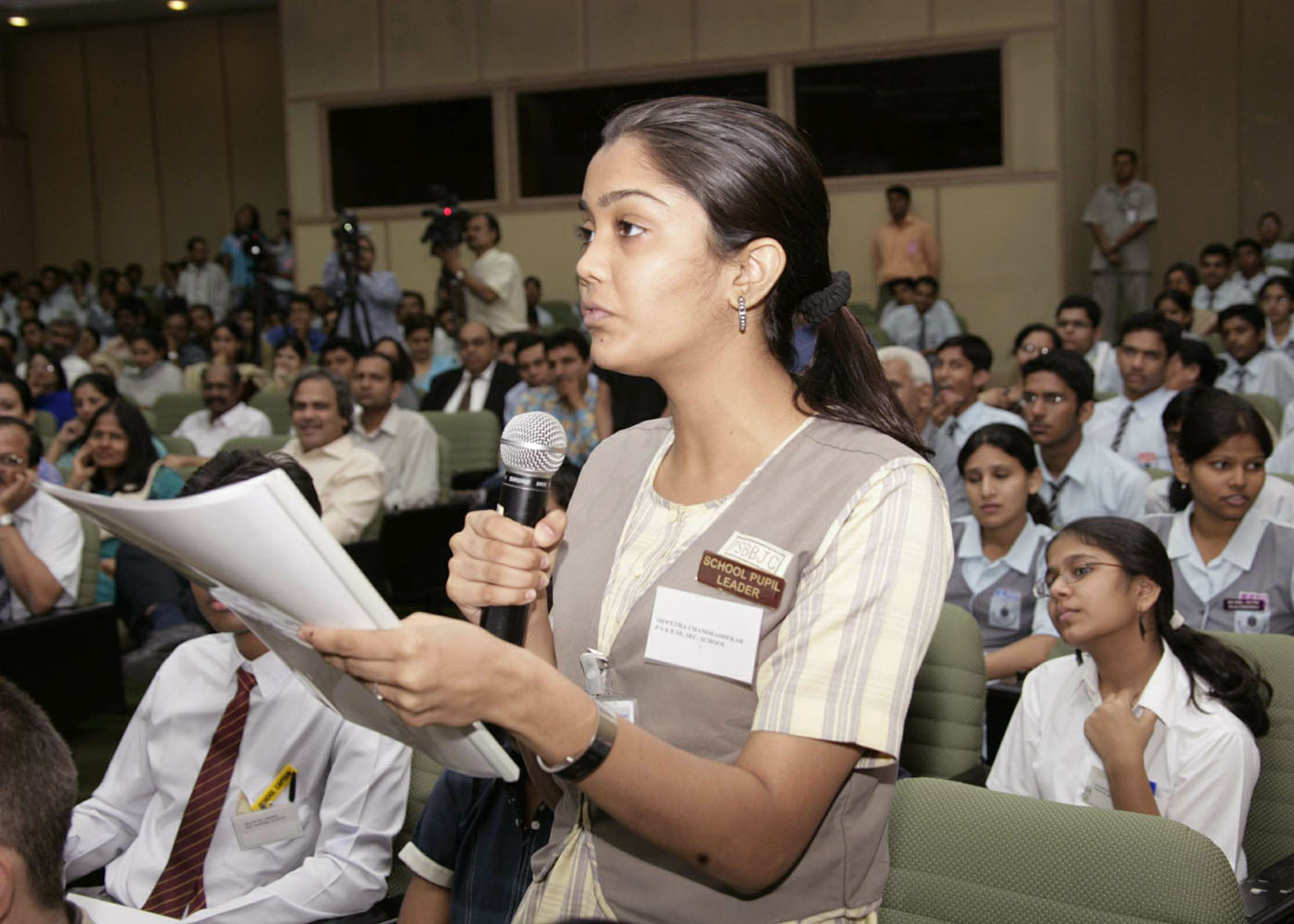
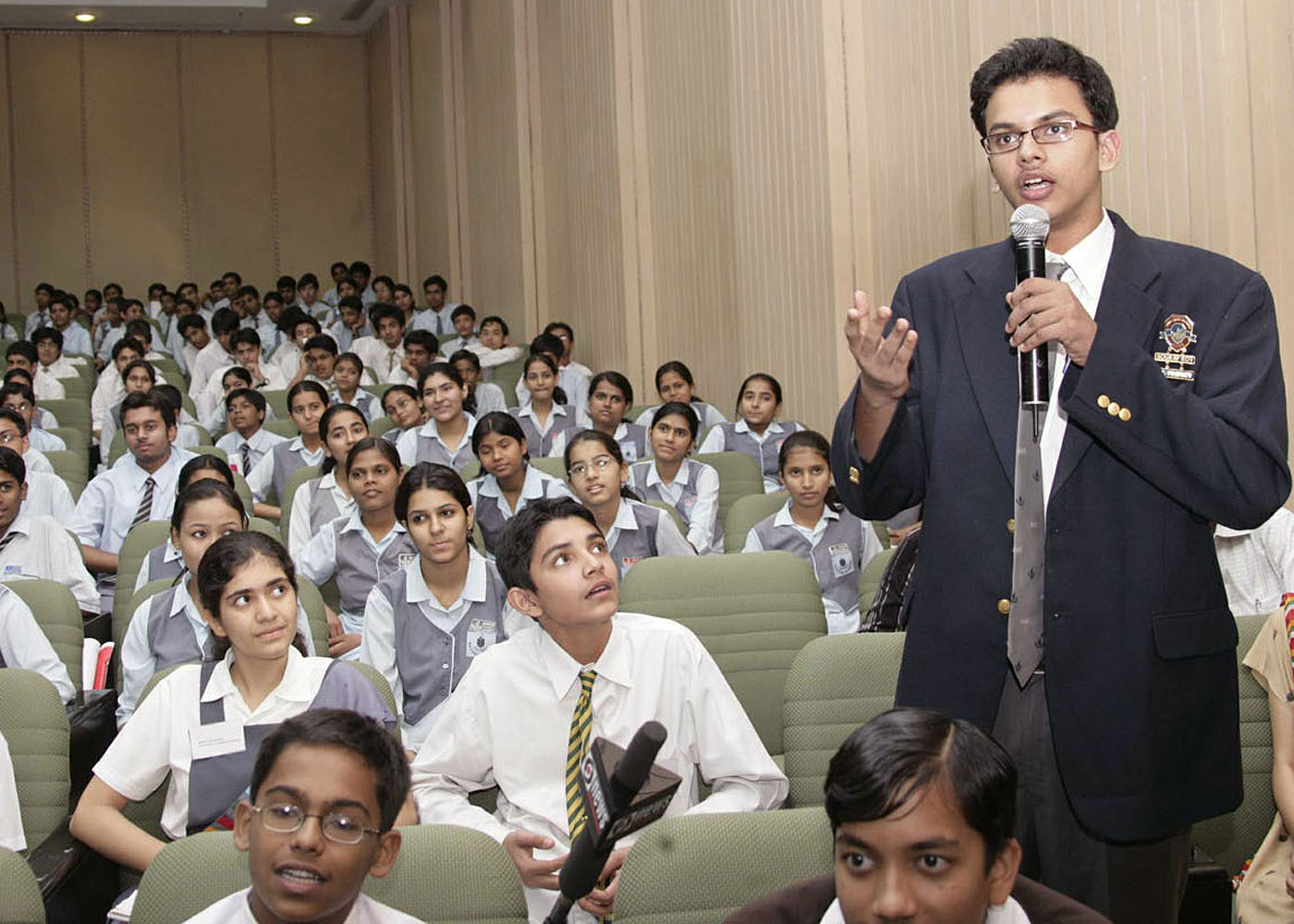
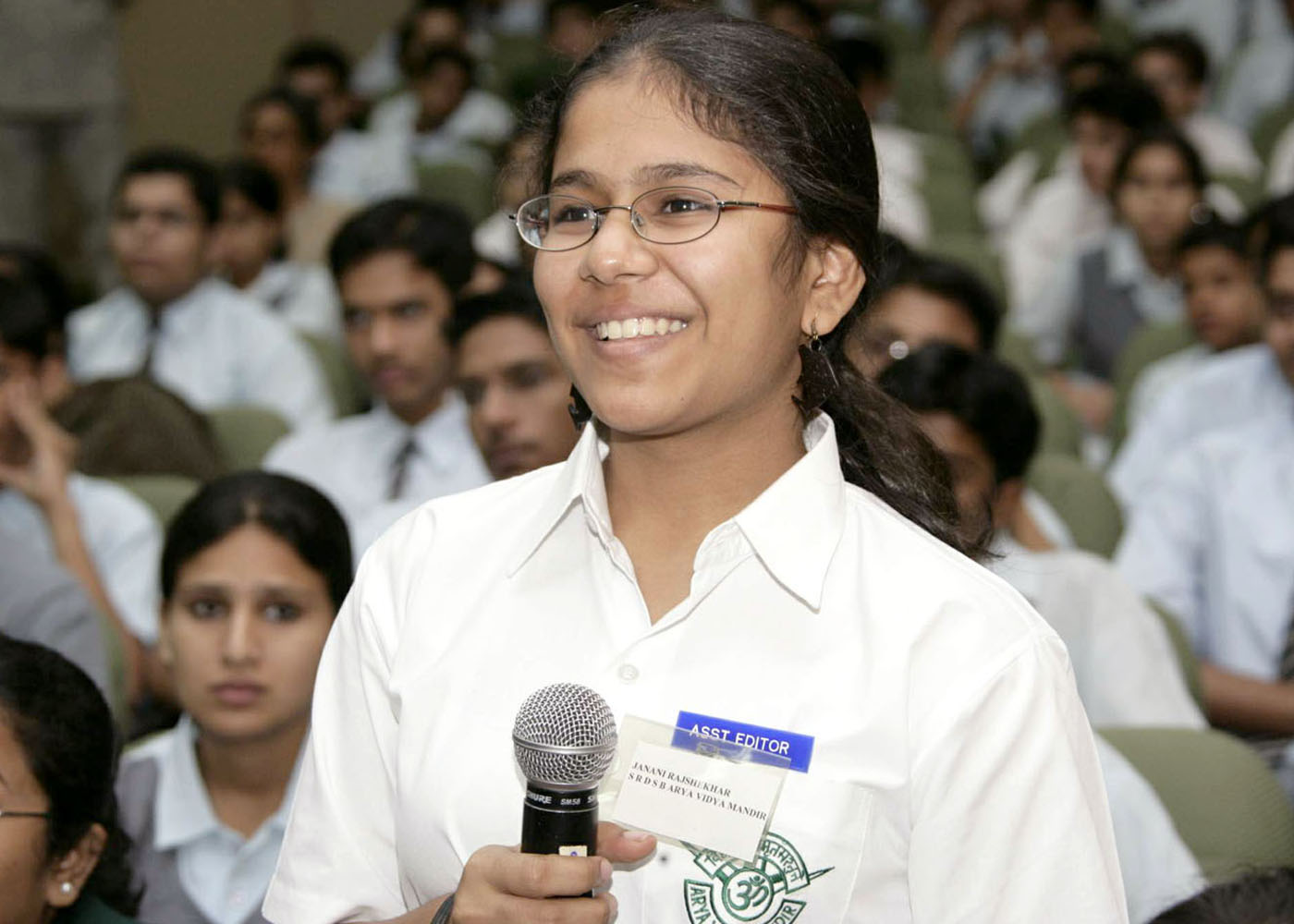
<<Back
|
|